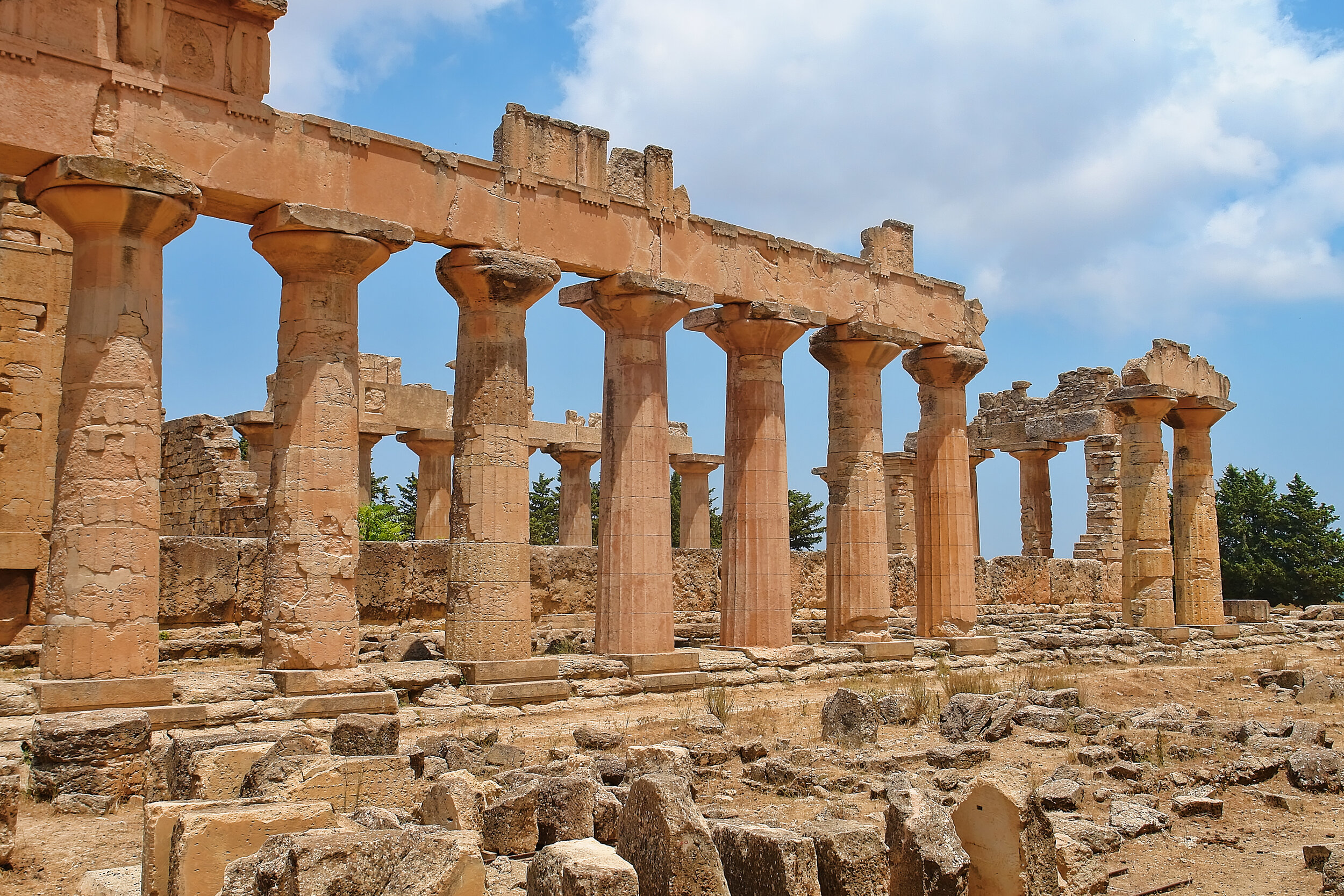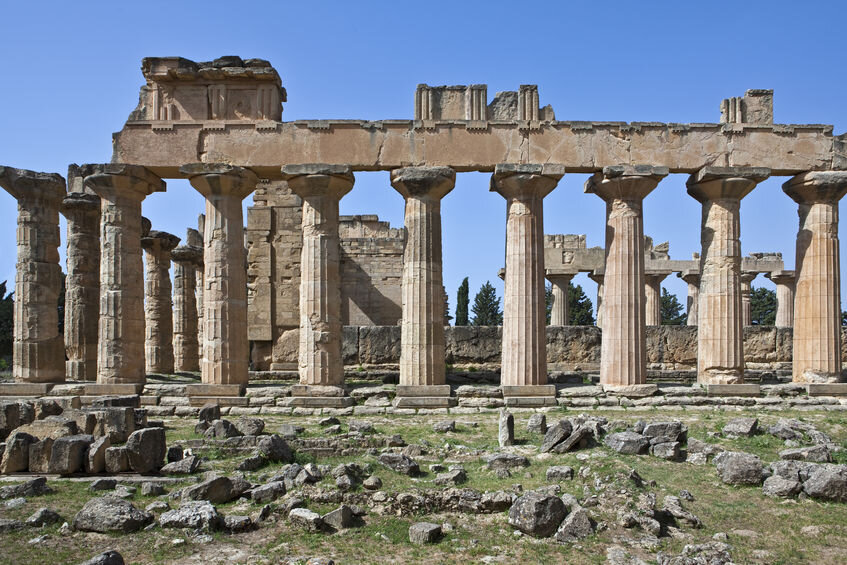GRECIAN period.

Temple of Zeus, Cyrene, Libya
The Greeks in Libya
During the time of their hegemony over the Mediterraneans, the Phoenicians, primarily through Carthage, controlled numerous trading outposts along the coast of what is now Tunisia and Libya. The Greeks gradually established themselves as contending trading powers in the Mediterranean from about 750 BC onwards, and gradually established hundreds of colonies across Southern Italy and, eventually, the coast of Libya, establishing the formidable trading post of Cyrene in Eastern Libya in 631 BC.
Following a series of skirmishes across the Mediterranean between the Phoenicians and the Greeks, the border between the Punic kingdom of Carthage and Cyrene was delineated at Arae Philaenorum, as evidenced in the famous Peutinger map1.
Temple of Zeus, Ruins of Ancient Cyrene
Following the establishment of Cyrene, the Greeks then expanded their territory in the region to Barce (Al Marj), Eusperides (now Benghazi), Teuchira (now Tukra) and Apollonia (now Marsa Susa). These five cities formed the Pentapolis (Greek for the five cities) and together became the region known as Cyrenaica2. Despite taking control of the Pentapolis, the Greeks had significant challenges and threats in terms of sustaining their rule; they had to resist the encroachments of the Egyptians from the East and Carthaginians from the West, eventually being defeated in 525BC by the Achaemenid army of Cambysses II of Persia, otherwise known as the ‘Army of Sand’.
Greek Theatre of Apollonia (Cyrene)
Cyrenaica remained under Persian rule for the following two centuries, until Alexander the Great brought Cyrenaica under Greek rule again in 332 BC, which he ruled until his death in 323BC. Upon Alexander’s death, his empire was divided among his generals. Egypt, along with Cyrene, went to Ptolemy I Soter, his trusted friend, whilst the other states of the Pentapolis retained their autonomy, however their inability to govern themselves and maintain stability in their various states, led to the Ptolemies forming the Federation of the Pentapolis.
The Federation was ruled by a member of the Ptolemy royal house, until the death of the last Greek ruler, Ptolemy Apion in 96BC, when, in his will, he separated Cyrenaica from Egypt and bequeathed it to Rome. Certain historians have postulated that, during Ptolemaic rule, Cyrene became one of the greatest intellectual centres of the classical world3.
Ptolemaic Map, showing Libya Interior in the Ptolemaic Kingdom, from 1575 Basel Edition
FOOTNOTES.
Livius.org. 2021. Arae Philaenorum (Ras al-A'ali) - Livius. [online] Available at: <https://www.livius.org/articles/place/arae-philaenorum/> [Accessed 25 March 2021].
“Cyrenaica.” Wikipedia, The Free Encyclopedia. March 23, 2021. https://en.wikipedia.org/w/index.php?title=Cyrenaica&oldid=1013836212.
ibid.



